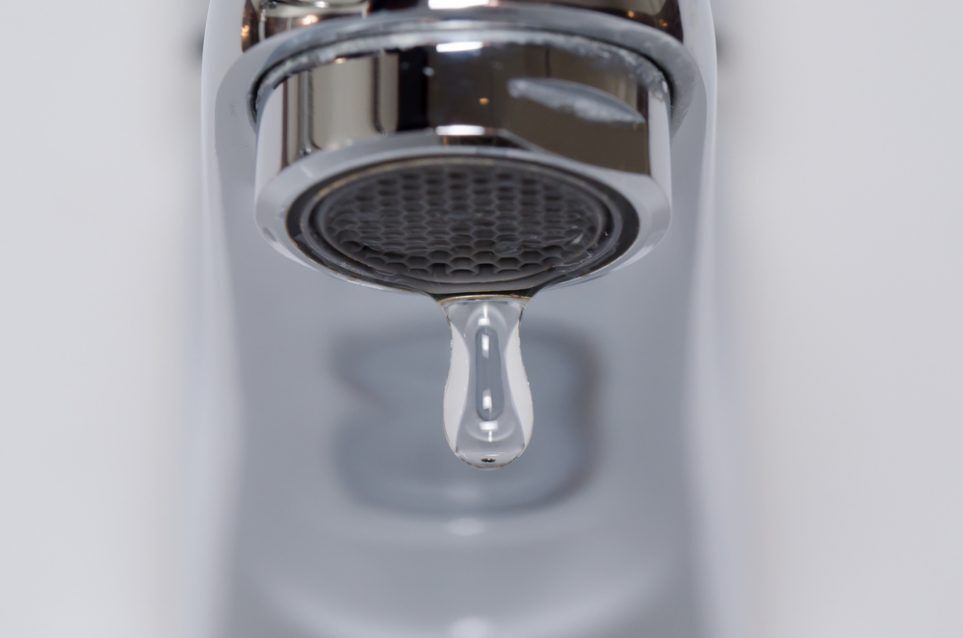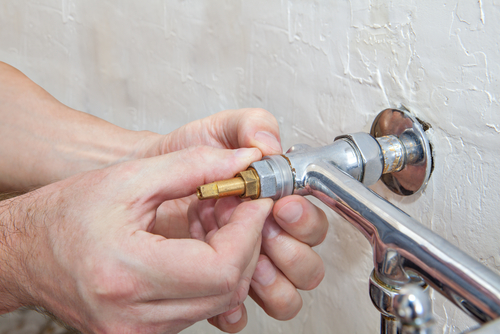The Upsides of Correcting a Broken Faucet
The Upsides of Correcting a Broken Faucet
Blog Article
What are your thoughts and feelings on Why Is It Important To Fix Your Leaking Tap/Faucet??

Dripping faucets may feel like a minor inconvenience, but their influence surpasses simply the inconvenience of the sound. From drainage to incurring unnecessary economic expenses and health and wellness risks, overlooking a leaking tap can bring about various consequences. In this write-up, we'll explore why it's essential to resolve this usual household concern without delay and properly.
Waste of Water
Ecological Influence
Trickling faucets contribute considerably to water waste. According to the Epa (EPA), a single faucet trickling at one drip per second can throw away more than 3,000 gallons of water each year. This not just strains water resources yet likewise affects ecosystems and wildlife dependent on them.
Step-by-Step Guide to Repairing a Dripping Faucet
Tools Called for
Before trying to take care of a trickling tap, collect the required tools, including a flexible wrench, screwdrivers, substitute parts (such as washers or cartridges), and plumber's tape.
Typical Faucet Issues and Their Solutions
Identify the type of tap and the specific problem creating the drip. Typical problems consist of damaged washing machines, rusty shutoff seats, or damaged O-rings. Refer to maker guidelines or on the internet tutorials for detailed advice on repair services.
Financial Expenses
Increased Water Bills
Past the environmental effect, trickling taps can blow up water bills substantially. The gathered wastefulness in time converts right into higher utility costs, which might have been avoided with timely repair work.
Possible Residential Or Commercial Property Damages
Additionally, extended trickling can lead to damage to components and surface areas bordering the faucet. Water buildup can trigger staining, deterioration, and even architectural issues if left ignored, resulting in additional repair work costs.
Health Worries
Mold And Mildew and Mildew Growth
The continuous visibility of dampness from a trickling tap produces a suitable setting for mold and mold development. These fungis not just compromise interior air high quality but likewise present health dangers, particularly for individuals with breathing conditions or allergies.
Waterborne Illness
Stationary water in trickling faucets can become a breeding place for bacteria and other pathogens, boosting the danger of waterborne diseases. Contaminants such as Legionella microorganisms prosper in stagnant water, possibly causing major diseases when ingested or breathed in.
DIY vs. Professional Repair
Benefits and drawbacks of Do It Yourself Repair Work
While some might try to fix a dripping tap themselves, DIY repairs feature their own set of obstacles. Without proper knowledge and devices, DIY efforts can exacerbate the problem or cause insufficient repairs, lengthening the issue.
Benefits of Working With an Expert Plumber
Hiring an expert plumber guarantees that the underlying root cause of the trickling tap is resolved successfully. Plumbings possess the experience and devices to diagnose and repair faucet concerns effectively, conserving time and lessening the risk of further damages.
Environmental Obligation
Individual Payment to Preservation
Taking obligation for fixing dripping faucets straightens with wider efforts towards water preservation and ecological sustainability. Every person's actions collectively make a considerable effect on preserving valuable resources.
Sustainable Living Practices
By prioritizing timely fixings and taking on water-saving routines, individuals contribute to sustainable living practices that profit both present and future generations.
Preventive Measures
Regular Maintenance Tips
To avoid trickling taps, perform routine maintenance such as cleaning up aerators, checking for leaks, and changing damaged parts quickly. Additionally, consider installing water-saving tools or upgrading to extra reliable fixtures.
Importance of Prompt Fixes
Addressing trickling taps as soon as they're discovered avoids additional water waste and possible damages, inevitably conserving both water and money over time.
Effect On Building Worth
Assumption of Well-Maintained Property
Maintaining a home in good condition, including resolving upkeep issues like leaking faucets, improves its regarded value and worth amongst potential customers or tenants.
Influence on Resale Value
Features with well-kept plumbing fixtures, consisting of taps, command higher resale worths in the real estate market. Dealing with leaking taps can contribute to a favorable impact during residential property examinations and arrangements.
Final thought
Addressing a trickling tap exceeds plain benefit; it's an important step toward conserving water, minimizing economic expenses, and safeguarding health and wellness and home. Whether via DIY repairs or professional aid, taking action to repair trickling faucets is a little yet impactful method to promote accountable stewardship of sources and contribute to a healthier, much more lasting future.
How to Fix a Leaky Faucet: Step-by-Step Repair Guide
A leaky faucet may seem like a simple annoyance, but if it's not fixed promptly, that leak could cost hundreds to potentially thousands. From water damage to mold, mildew, and high water bills, even a tiny leak can be catastrophic if left unattended. Damage like this can even affect the overall value of your home, so it's important to take the right approach for leaky faucet repair. You may need the help of a plumber in some cases, but we've got a few tips you can try on how to fix a leaky faucet before calling the pros.
Four Faucet Types
When you're learning how to fix a leaky faucet, the first step is knowing what kind of faucet you're working with! There are four common types.
Cartridge Faucets
Cartridge faucets come in one- or two-handled varieties. In one-handled cartridge faucets, hot and cold water combines in a single cartridge. In the two-handled versions, hot and cold water are controlled separately and mixed in the faucet.
Ball Faucets
Ball faucets have a single lever you push up and down to adjust the pressure and rotate to change the temperature. A slotted metal ball controls the amount of water allowed into the spout.
Compression Washer Faucets
They're the oldest type of faucet, but they're still used in many homes — especially older ones. Compression faucets have two separate handles that, when turned, raise or lower the washer that seals a water valve. This valve stops water from flowing through the faucet when it is turned off.
Disc Faucets
Disc faucets rarely need to be repaired due to their maintenance-free design. The water flow is controlled by two discs — the upper one raises and lowers against a fixed lower disc, creating a watertight seal. If your disc faucet starts leaking, you may need to replace the seals or clean residue buildup from the inlets.
Fixing a Leaky Faucet
Step 1: Turn Off the Water
Whether you're learning how to fix a leaky bathtub faucet or how to fix a leaky kitchen faucet, always turn off the water supply to your working area when you're fixing a leak. The last thing you want is a flood added to your list of things to fix.
Look for the shutoff valves below your sink or around the tub and turn them clockwise to stop the water flow. If your faucet doesn't have shutoff valves, you may need to turn off the water for the whole house. Check to make sure it's off by turning the faucet on. If nothing comes out, you're ready to start the repair.
Step 2: Take Apart the Faucet
How you disassemble your faucet depends on the type of fixture you have. You can use a flathead screwdriver to remove the caps on top of the handle or handles for cartridge and compression faucets. Inside, you should see handle screws. Unscrew these with a screwdriver to remove the handle.
Disc- and ball-style faucets will typically have an inlet screw near the handle, and removing that will reveal the interior of the faucet.
Detach the Valve Stem
For cartridge- and compression-style faucets, you'll see the inner valve stem or cartridge once you remove the faucet handles. If you have a compression faucet, unscrew the brass valve stem. If you have a cartridge faucet, pull out the cartridge. If your cartridge has been in place for a while, it may require some tools or extra force to remove it due to mineral deposits.
Examine and Replace Parts
Once you've removed the parts, check them out to confirm what needs to be replaced. You may see corroded rubber washers, O-rings, stems, or cartridges. On a ball-style faucet, check the seats and springs for damage.
If you need to repair a leaky disc faucet, check the inlet and seals on the lower disc.
Once you determine what parts must be replaced, visit your local hardware store. Bring the damaged parts with you to ensure you can purchase the correct components to replace them.
Clean Valves and Faucet Cavity
If you've removed a stem or cartridge, you may notice mineral buildup in the faucet's threads. Use white vinegar to clean the valve seat by soaking it for a few minutes, then scrub it away with a soft toothbrush and rinse with warm water. You can also clean the interior of the faucet in the same way.
Reassemble the Faucet
Once your faucet is cleaned and the required parts have been replaced, it's time to reassemble it. Put the pieces back together and slowly turn the water supply back on. Doing this slowly is crucial because too much initial water pressure can damage the new hardware you've just installed.
https://homewarranty.firstam.com/blog/how-to-fix-leaky-faucet

I found that blog entry about 4 Common Reasons for a Leaky Faucet while exploring the internet. If you enjoyed reading our post please don't forget to share it. Thanks a bunch for your time. Don't hesitate to check our site back soon.
Report this page